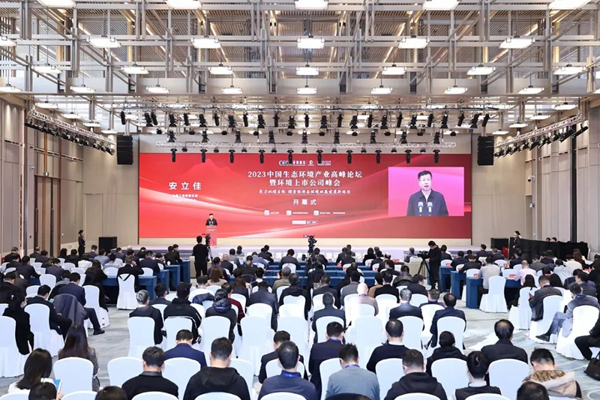Manufacturing PMI expands in March
PMI: Boosting domestic demand seen as key priority
China's factory activity expanded in March after five consecutive months of contraction, an official survey revealed on Sunday, adding to a run of indicators that suggest the stabilization of the world's second-largest economy.
Experts said that signs of economic recovery emerged at the beginning of the year, with factory output and investment growth accelerating while deflationary pressures eased. This indicated a robust outlook for 2024 and laid a solid foundation for achieving the country's annual GDP growth target of around 5 percent.
Meanwhile, they said the broader economy is still facing pressures from shrinking demand and weakening expectations, adding that more policy easing measures are needed to boost domestic demand, especially expanding effective investment.
China's official purchasing managers index for the manufacturing sector rose to 50.8 in March from 49.1 in February, according to the National Bureau of Statistics. The 50-point mark separates contraction from growth.
Zhao Qinghe, an NBS statistician, said the manufacturing PMI improved in March as accelerated factory activity resumed after the Spring Festival holiday. "The level of economic prosperity in China is rebounding," he added.
China's nonmanufacturing PMI, which incorporates subindexes for services sector activity and construction, also rose, coming in at 53 in March, compared with February's 51.4.
The country's official composite PMI, which includes both manufacturing and nonmanufacturing activities, climbed to 52.7 in March from 50.9 in February, according to the NBS.
Zhou Maohua, a researcher at China Everbright Bank, said: "The manufacturing PMI, along with the good nonmanufacturing PMI figures, suggests that China's economic activity is expanding at a faster pace while the momentum of domestic demand recovery is consolidating."
Zhou said the first quarter is exhibiting a notable uptick in economic activity compared with the preceding quarter, given the rebound in both demand and supply coupled with a sustained recovery in confidence among households and businesses.
NBS data showed profits at industrial enterprises witnessed a 10.2 percent year-on-year jump in the first two months of the year, reversing a 2.3 percent decline in 2023.
Zhang Liqun, a researcher at the macroeconomic research department of the Development Research Center of the State Council, said China's economy is showing signs of stabilization.
However, challenges persist from shrinking demand and weakening expectations, thus the country needs to step up macroeconomic policy support and strengthen countercyclical adjustments to hit its annual growth target of around 5 percent this year, Zhang told China Daily on Sunday on the sidelines of a seminar organized by Renmin University of China's Chongyang Institute for Financial Studies on Sunday in Beijing.
"Given the cloudy global economic outlook, boosting domestic demand should be among the key priorities for China's economic work this year. Government investment will be key for expanding domestic demand," he said.
A research report — China's "Compounding Interests": High-quality Development and Outlook for 2035 — was released during the seminar, which said that China's economic growth potential remains enormous despite the ongoing weak social expectations.
"As long as we firmly deepen reform and opening-up in the law-based and market-oriented direction, correct distortions in resource allocation and ensure effective implementation of policies, we will be able to reverse the social expectations of economic compounding interest in the medium to long term," the report said.
Looking ahead, the report said that by 2035, China's per capita disposable income is expected to double that in 2023, and the proportion of the country's middle-income group is expected to increase from one-third to nearly half of its population.
Zhu Guangyao, former vice-minister of finance, said that more efforts are needed to hit the goal of basically realizing socialist modernization by 2035.
He said on Sunday during the seminar that the country needs to keep its annual nominal growth rate at over 4.7 percent to reach that goal, and the country should take more measures to narrow the artificial intelligence gap with the United States.





